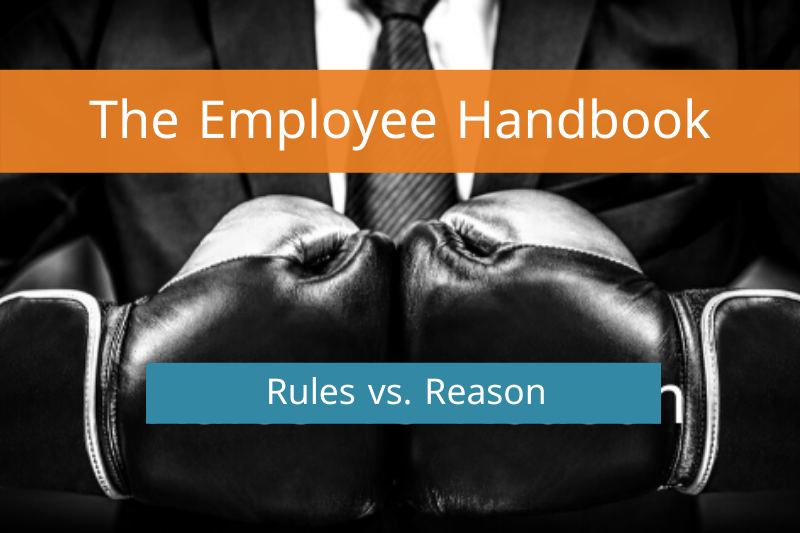Last week I was helping the CEO of a community organization sort through a sticky employee matter. As we were sorting through details and options, one thing she mentioned instinctively was that there was no human resources policy in place for how to handle that type of situation. I was leaning heavily towards a swift and firm response, but somewhere earlier in her experience it was clear that an HR person convinced this amazing leader that the HR rulebook had to be in order first.
This is a great leader, smart and with years of experience and it reminded me how often I see clients getting tripped up by equating an employee handbook, with a rulebook. They’ll worry over whether or not they have all the right words, laws, policies and punctuation in place or fret about whether or not it’s long enough or derived from the “best” template.
That my friends is not how to think about an employee handbook. As one of the three core HR foundation documents, your employee handbook is an opportunity to communicate where you stand as an employer and what’s important to you. There is no magic template that will ward off all bad things and in most (but not all cases) dated references aren’t going to sink your ship.
Here’s our approach to helping clients make the employee handbook work for them and minimize the stress:
- Recognize What It Is – this is a communications document that will serve as a reference for three distinct audiences: management, employees and outside parties (e.g. attorneys and labor compliance staff). Most of these groups won’t memorize it, and will use it as a reference guide.
- Yes, You Are Subject to a Lot of Rules and Laws – while it’s helpful to make sure everything is up to date once per year as legislation and case law shift, don’t kill yourself trying to be up to date all the time. There’s often some delay before critical changes become law.
- What You Choose to Include Matters – references to items like Veteran’s Day Leave (Oregon), and leaves that reference domestic violence protections, breaks for nursing mothers and caring for sick children, are items that most States address. As awkward and uncomfortable as those subjects can be for some managers, how you position and implement those policies will send a loud message to your staff about your values, and your respect for them as a whole person.
- The Question is More Often What Should You Do vs What Could You Do – you can choose to embrace the rules and protections for employees or do the bear minimum. Forget about pure compliance for a moment and think about what message you want to send to your team. You may be the boss, but they’re watching and how honestly you engage, will impact how well they show up and deliver quality work.




